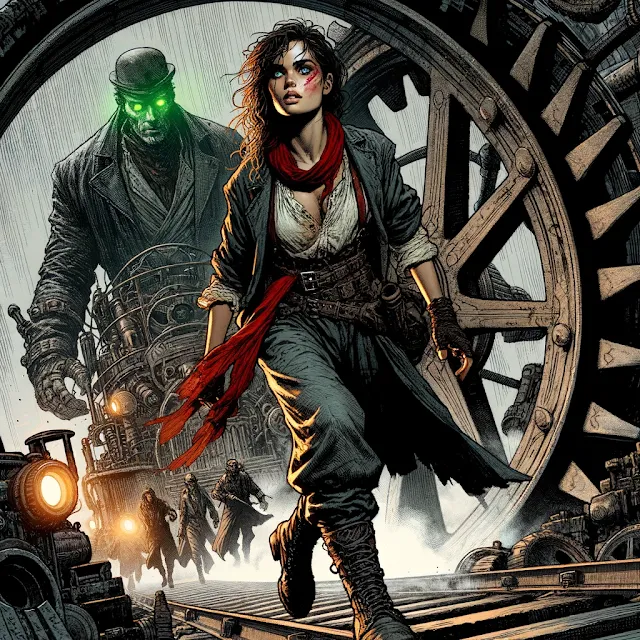Within the pages of Philip Reeve's Mortal Engines series, Hester Shaw is not merely a protagonist; she is the scarred, beating heart of the entire saga. Her journey is a profound and brutal exploration of trauma, love, and redemption. She begins as a feral creature defined by a single, burning purpose and evolves into a figure of terrifying complexity and, ultimately, tragic peace. To understand her arc is to understand the soul of the series itself.
Book 1: A Shard of Hate (Mortal Engines)
Hester is introduced as a force of nature, a girl defined by her horrifying facial scar and a singular, all-consuming purpose: to kill Thaddeus Valentine, the man who murdered her mother. Her scar is not just a disfigurement; it is her identity. In a world of polite lies and civic pride, her wound is a badge of ugly truth. Her internal monologue, "She had always known that Valentine was hers to kill," reveals a life distilled down to one single act of vengeance. She is hostile, aggressive, and utterly alone, viewing the world only through the lens of her hatred.
Her relationship with Tom Natsworthy begins this transformation. Tom is the first person in her life who sees past the scar to the person beneath. His naive idealism clashes with her brutal pragmatism, but their forced alliance in the Out-Country slowly erodes her isolation. For the first time, she is part of a "we," and this connection, however fragile, plants the first seed of a life beyond revenge.
Book 2: A Savage Love (Predator's Gold)
In "Predator's Gold," Hester's capacity for love becomes as fierce and destructive as her capacity for hate. Her relationship with Tom is now the center of her universe, but her deep-seated trauma manifests as a savage possessiveness. Convinced that she is unlovable and that Tom will eventually leave her for the beautiful margravine of Anchorage, she makes a terrible choice. She sells the location of the helpless city to the Lost Boys of Grimsby, a ruthless pirate town. It is a shocking act of betrayal born not of malice, but of a desperate, terrified fear of abandonment. This dark chapter proves that her scars are not easily healed and that her love can be a dangerous, all-consuming force.
Book 3: A Wolf's Devotion (Infernal Devices)
Sixteen years later, in "Infernal Devices," Hester has channeled her violent nature into a new, singular purpose: protecting her daughter, Wren. Reeve uses the powerful internal metaphor of Hester seeing herself and Wren as a "wolf and a wolf-pup." When Wren is kidnapped, Hester's maternal instinct becomes a terrifying force. She hunts down those who took her daughter with a ruthlessness that shocks even Tom. Her capacity for violence has not vanished; it has been repurposed. She is no longer fighting for revenge, but for the survival of her family. This is a crucial evolution, moving her from a destructive force to a fiercely protective one.
Book 4: A Final, Terrible Peace (A Darkling Plain)
Hester's final arc in "A Darkling Plain" is a journey toward a tragic and profound peace. Weary of the world's endless war, her only desire is a quiet life with Tom. When Tom is mortally wounded in the final battle, Hester's world shatters. Her ultimate decision to take her own life is not one of simple despair. It is the culmination of her entire journey. Her daughter, Wren, is safe and has her own future. Her love for Tom is absolute, and a world without him is a world without meaning for her. In her final moments, she also fulfills a strange, unspoken pact with the Stalker Shrike, the other tragic figure tethered to her life, finding at last the quiet she could never have in a world of roaring engines.
The Legacy of a Scar
Hester Shaw's legacy is one of the most powerful in modern young adult literature. She is a testament to the potential for change, even in the face of unspeakable adversity. Her journey from a vessel of hate to a person defined by a fierce, protective love challenges our notions of what a hero can be. Hester's story, masterfully woven by Philip Reeve, reminds us that no one is defined solely by their scars or their mistakes, and that even in the most broken person, there is a profound capacity for love, sacrifice, and redemption.















